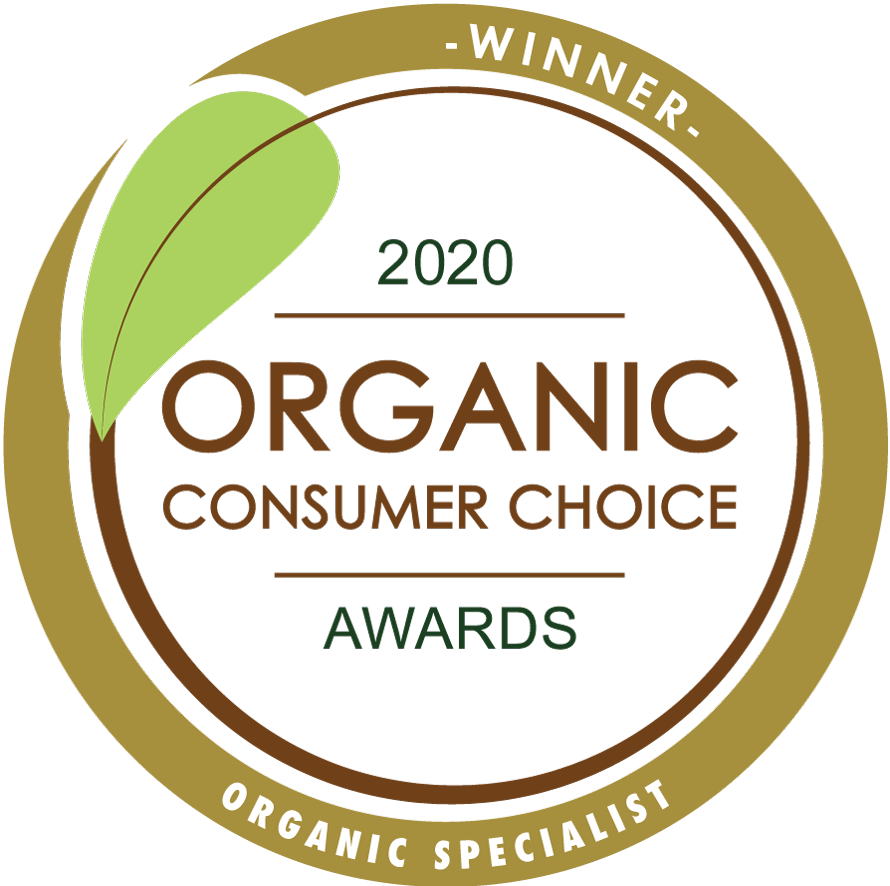| item(s), Total: $0.00 View Cart |
| Shopping cart is empty. |
Hi There and welcome to our Autumn e-newsletter!
Thanks for the feedback on the last newsletter! Don’t forget, if you have anything you would like us to focus on in future editions, drop us a line. This time we are pleased to have an in depth look at a lesser known vegetable and herb, courtesy of Leesa Caldwell of The Greenhouse, our supplier of Certified Organic vegetable seedlings. Leesa’s winter vegies will all be in stock over the next few weeks; come in and have a look! Cheers, Jobs for the garden this Autumn SPECIAL OFFER for our newsletter readers!!
As things are coming to the end of their cycle in the garden, it’s time to clean out garden beds, compost spent plants, and to start planning your next cycle of planting. Here are a few things which you may need to address at this time of year:-
There are a huge range of winter vegies and herbs which will grow well if planted out now:-See our ‘when to sow’ chart: We are receiving new seedling stock every week, with more and more winter vegies coming in. Also recently received – a new Eden Seeds order. Kale - Why You Should Eat Your Greens!
Kale is an ancient descendant of the cabbage family originating from Asia. Heavily used by the Roman Empire and loved by the peasants of the Middle Ages for its earthy flavours and sustenance.
Kale also contains the carotenoids lutein and zeaxanthin. These carotenoids prevent damage to the eyes from excessive exposure to ultraviolet light. Studies have shown the protective effect of these nutrients against the risk of cataracts, where increased eye cloudiness leads to blurred vision. In one study, people who have a diet history of eating lutein-rich foods like kale had a 50% lower risk of new cataracts. There are many types of kale that can be found. At The Greenhouse we produce three types of kale – Nero Di Toscana, Dwarf Green and Red Russian - pictured above in this order. St Mary’s Thistle – Silybummarianum St Mary’s Thistle is a biennial plant growing to 1 metre. It has a grooved stem, with lobed shiny green leaves mottled with a white midrib and pale yellow spines that are extremely spiky. It produces purple flowers in spring and summer. It grows readily from seeds and is prone to self-seeding in the garden, hence making it a noxious weed of Australia. (So please garden responsibly and take the plant with you if you move!) Deadheading the flowers before they set to seed avoids weed problems. Be careful, though, as their spines are very sharp so make sure you wear gloves. Milk Thistles can grow in either sunny or lightly shaded areas of the garden and the soil type is not too important. They can tolerate dry and wet soils so just let them be. Historically this herb has been used in Europe as a liver tonic and current phototherapy indicates its use in a whole range of liver and gall bladder conditions including hepatitis and cirrhosis. Ancients believed that the white veins that mottled the leaves of milk thistle represented drops of the Virgin Mary's milk, fallen there when she nursed baby Jesus.
The entire plant of the milk thistle is edible and it is known to help in aiding digestion. The seeds are demulcent and they have traditionally been used with the leaves for coughs, low milk flow, depression, digestion, gall-bladder and spleen disorders. Milk Thistle is used to increase the secretion and flow of bile from the liver and gall-bladder. Its traditional use is as a liver tonic which has been supported by research showing that it contains constituents which protect liver cells from chemical damage. Research done in Germany showed that milk thistle reverses toxic liver damage as well as protection from potential hepatotoxic agents. (Courtesy of Leesa Caldwell from www.thegreenhouseorganic.com) Note from The Green Life Soil Co: Please play your part in avoiding the spread of noxious weeds. If you grow this herb for medicinal reasons, take the plant with you if you move house and always dead head flowers before they set seed. Thank you! The Soil Foodweb International is an organisation providing research and consultation to farmers and growers, helping them achieve optimal crop yield and plant growth through improving the health and microbial activity of the soil. Soil life is vital to ensure healthy plant growth. Studies have shown that soil that is biologically alive produces plants that require less fertiliser, water, and are more resistant to pests and disease. As part of our commitment to ongoing improvement of our soils, we have begun to focus on the soil biology in our mixes. We have been working with The Soil Foodweb to assess the microbial life of our soil and to look at ways to optimise beneficial microbial activity. We will be continuing a testing program to ensure that we keep on track with providing you with soils that are not only nutritionally complete, but also provide the best possible food sources for beneficial nematodes, bacteria, fungi and protozoa. In addition, The Soil Foodweb develops compost teas which are a very efficient way to innoculate soil with beneficial microbes. There is a local business here in Perth developing this process, and it won't be long before these teas are available for use in a range of situations. Watch this space for more information! To learn more about The Soil Foodweb, see their website: www.soilfoodweb.com.au Fish Hydrolysate - The Good Oil! Fish emulsion is a common fertiliser most organic gardeners use. The difference between fish emulsion and fish hydrolysate is the oil. Emulsions have the oil removed (it is used in the cosmetics industry) while hydrolysate still contains a certain amount of oil. The benefits of using fish fertiliser (especially with an oil content) are that it breaks down to feed good bacateria and fungi in the soil. The nutrient excreted by bacteria ensure sustainable, healthy plant growth. The bacteria and fungi assist the plant roots to access nutrients, Over time, soil structure improves, and less fertilisers and pesticides are required due to sustained healthy growth. Some fish emulsions have additives – to increase NPK ratios, or for other added nutrients. Like all organic fertilisers, NPK rates will be lower than on any chemically produced fertiliser. However, the organic and inorganic elements work differently within the soil. Organic nutrients tend to be slower acting, but far less leaching. They have a more beneficial effect on soil life and act to feed the soil rather than simply supply nutrients in a quick hit to the plants. At The Green Life Soil Co we have found a great source of fish hydrolysate. Certified Organic by NASAA, the hydrolysate is made from waste tuna product from South Australia. It contains no additives. (Whatever your stance on ocean fishing, at least the hydrolysate makes good use of what would otherwise currently be just a waste product.) We are now adding the hydrolysate to our soil mixes. Additionally, we are selling concentrated hydrolysate in 1L and 5L bottles so you can use it at home too. It makes a great fertiliser suitable for soil and foliar application, and the good news is, you can bring the bottle back for a refill, meaning we are together creating less wastage of packaging. Keeping a few chooks in the backyard is a fantastic thing to do! Whether you research and source some of the rare and lovely old fashioned breeds, or whether you save some commercial Isa Browns from a life in a commercial chicken farm, they will provide you with hours of entertainent! Not to mention the benefits of recycling food scraps, producing useful manure, pest control in your garden, and even supplying delicious eggs! Check with your local council what regulations apply. Some councils have limits on numbers, or proximity of enclosures to neighbours, etc. And nobody in suburbia is very tolerant of roosters! So while you can buy fertlised eggs and incubate them until they hatch (which is a wonderful thing to do with kids) – be prepared you may well end up with unwanted “boys”. Unfortunately most of these do not end up enjoying a happy life – many are illegally dumped; something we have seen more than once. Sexed young chicks are available, and again seeing fluffy, tiny chicks grow up is something kids love. Chicks are surprisingly robust. A lightbulb for warmth, chick starter crumble and a shallow dish of fresh water is all they require (along with adult supervision to ensure they aren’t cuddled to death!) Commercial breeds like Isa Browns commence laying at around 20 weeks, and will generally produce an egg a day for at least two years. Pullets are young hens soon to be laying, and can be bought for around $20 each. Egg farms usually replace their birds at around 18 months. These “old” hens are available very cheaply – around $10 each and will continue to supply eggs for some time. And rescuing these bedraggled girls is a great thing to do. Most will have spent their lives indoors in cages. They will need to be taught to roost and may even take a few days to venture outdoors and do chooky things, having spent their life in a tiny cage indoors. The unnatural accellerated egg production of commercial breeds leads to exhaustion and they generally have a shorter lifespan, Often 3 – 4 years, but they have been known to survive much longer, still popping out the odd egg every week at least!
Most purebreed chooks have a longer lifespan of at least 8 – 10 years, and a longer laying lifetime, but may only lay every 2 – 3 days and will have more laying breaks throughout the year. Chooks will sometimes go “off the lay”, due to extremes in temperature (hot and cold), upsets within their environment, and when broody or moulting. Often a change in diet and added protein will get them back on the lay, but keep in mind these breaks are natural. Good housekeeping and hygene will keep birds healthy. They can be prone to parasites, stickfast fleas, etc, but there are remedies (both comercial and natural/homemade) to deal with most of them. Clean out your pens regularly – the waste makes great compost! Ensure clean, cool water is always available and make sure chook pens are fox proofed. Foxes are still around in many outer suburban areas, and the heartbreaking discovery of a fox kill in your chookpen is certainly something you will want to avoid. If you take good care of your birds, you will be greatly rewarded! For further information, see:- “Backyard Poultry – Naturally” by Alanna Moore (Bolwarrah Press) What’s new this Autumn for You? We have some exciting new products available at the Green Life Soil Co.:
(See our special trial offer on Biochar at the end of this newsletter.) Biomax Diatomaceous Earth Diatomaceous Earth is a natural product – made from the remains of microscopic sea creatures. Their shells have tiny, razor sharp edges, which is what makes DE so useful in pest control. When DE comes into contact with insects' soft bodies, it pierces their exoskeleton, dehydrating and killing the insect. Useful for ants, slaters, beetles, grasshoppers – etc. Insects cannot build up any kind of immunity, so DE is highly effective providing it comes into contact with the insect pest. Of course, it works on all insects, so use judiciously as it will also harm beneficial insects and bees. Return and Refill Service In addition, refills will be available by the kilo, so once you have made the initial investment in the bucket, refills will work out to be very economical. Sand Remedy - New & Improved Formula Many of our customers will already be familiar with Sand Remedy, our mineral mix designed to replace traditional soil wetting agents.
Sand Remedy now contains humate, which provides a food source for microbes, and rock dust, which provides a broad spectrum of trace elements and basic nutrients. There is also a microbial innoculent incorporated to kick start the colonisation process. The new formula is still Certified Organic, for peace of mind for you and your family's health. Pumpkin and Roast Capsicum Lasagne This year seems to be a good one for pumpkins! We are watching our butternut pumpkins mature – they are JUST about ready to pick... Although I do admit I have found several eaten out from underneath by slaters... I am eagerly awaiting our DE (Diatomateous Earth) to try to get on top of their numbers!! Anyway – assuming we will end up with a great harvest, and you do too – here is a yummy pumpkin recipe great as a winter warmer, or also just as wonderful served with a crisp salad for an autumn lunch. The colours are wonderful – lovely sunny pumpkin contrasted with red roasted capsicum. Ingredients
Method In a large, heavy pot melt the butter and cook the onion until golden. Add the pumpkin, put the lid on the pot and cook on a low heat. Check and stir occasionally to ensure the pumpkin isn’t sticking or burning. After about 45 minutes the pumpkin will be softened and will puree with stirring. If it is too moist, thicken by disolving the cornflour in cold water, then adding it to the mixture. Stir, and keep it cooking for a couple more minutes to thicken. Add salt and pepper to taste. Spread a little pumpkin puree over the base of a large baking dish, and arrange a layer of lasagne sheets over the top. Add another layer of pumpkin, then a layer of ricotta cheese. Sprinkle with the sundried tomatoes and nutmeg. Add another layer of pasta, pumpkin and ricotta. Top with the slices of roasted capsicum and chopped parsley. Add a third layer of pasta, pumpkin and ricotta. Use the grated parmesan cheese on top, Cook at 180o for 25 – 35 minutes, until the pasta sheets are cooked and the top is golden brown. Allow to stand for 5 – 10 minutes before serving, and enjoy! To roast the capsicum: cut into halves, remove seeds and rinse. Place skin side up on a tray. Place under the griller until the skin is blackened and blistered. Remove from grill and cover the tray – with another tray over the top, or with a layer of foil or plastic. This makes the capsicum sweat, and makes the skin easier to remove. After 5 – 10 minutes, peel off skin.
Limit of one per customer, only valid at our store. Please mention this offer, and we will take your name as confirmation. Valid until 31st May 2011.
So until next time – have a great time this Autumn in the garden! Have fun, and Let’s get dirty! (Don't forget - we'd love your feedback on this newsletter! Please contact us with your comments!) Thanks,
|



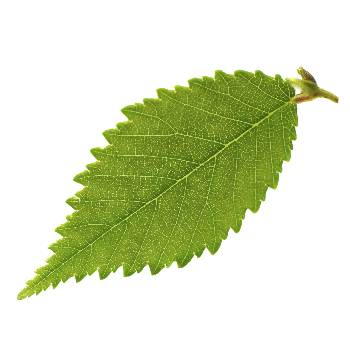 Hello again. I hope your gardens have all survived this summer. Isn’t it nice that the evenings and mornings are getting a little bit cooler; it shows the season is definitely changing! With everything crossed for a little bit of rain, it will soon be one of the most productive times to get out and get dirty in your garden.
Hello again. I hope your gardens have all survived this summer. Isn’t it nice that the evenings and mornings are getting a little bit cooler; it shows the season is definitely changing! With everything crossed for a little bit of rain, it will soon be one of the most productive times to get out and get dirty in your garden.
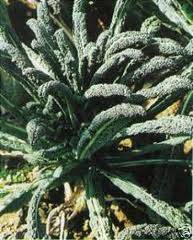
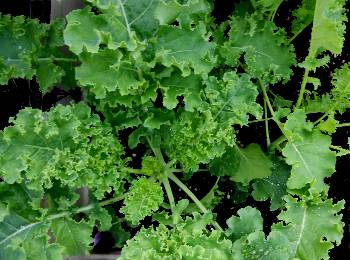

 The parts used of St Mary’s Thistle are their seeds and leaves. Milk thistle seeds contain a bioflavonoid complex known as silymarin. This constituent is responsible for the medical benefits of the plant.
The parts used of St Mary’s Thistle are their seeds and leaves. Milk thistle seeds contain a bioflavonoid complex known as silymarin. This constituent is responsible for the medical benefits of the plant.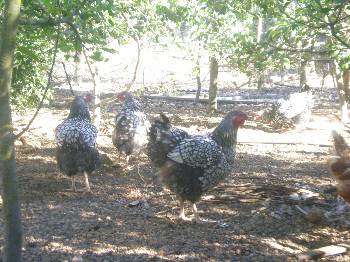 An alternative is to source out some of the older breeds of chicken. Thankfully, there are specialist breeders around Perth you can track down (see links at the end of this article). You may need to be patient, as chicks are usually not available all year round. And these hens are more expensive; $30 - $40 each, depending on age and the breed. Some of these breeds are absolutely gorgeous to took at, and there is a range of egg sizes and even egg colours produced.
An alternative is to source out some of the older breeds of chicken. Thankfully, there are specialist breeders around Perth you can track down (see links at the end of this article). You may need to be patient, as chicks are usually not available all year round. And these hens are more expensive; $30 - $40 each, depending on age and the breed. Some of these breeds are absolutely gorgeous to took at, and there is a range of egg sizes and even egg colours produced. Biochar
Biochar
 We have recently added two extra ingredients to Sand Remedy, designed to make the soil more habitable by beneficial microbes, fungi & bacteria. Once this microscopic soil life colonises the soil, nutrients become more available to plants, and the whole cycle of promoting healthy, living soil is begun. (Of course, we always recommend Sand Remedy as part of a soil improvement process, and additional organic matter is essential to really improve poor, sandy soil.)
We have recently added two extra ingredients to Sand Remedy, designed to make the soil more habitable by beneficial microbes, fungi & bacteria. Once this microscopic soil life colonises the soil, nutrients become more available to plants, and the whole cycle of promoting healthy, living soil is begun. (Of course, we always recommend Sand Remedy as part of a soil improvement process, and additional organic matter is essential to really improve poor, sandy soil.) As an introductory special, we are giving our readers the chance to try a 4kg tub of Biochar for themselves. Normally retailing at $34.00 - our "Newsletter Special" will save you $5.00 per tub - ie. you can pick one up for $29.00.
As an introductory special, we are giving our readers the chance to try a 4kg tub of Biochar for themselves. Normally retailing at $34.00 - our "Newsletter Special" will save you $5.00 per tub - ie. you can pick one up for $29.00.













